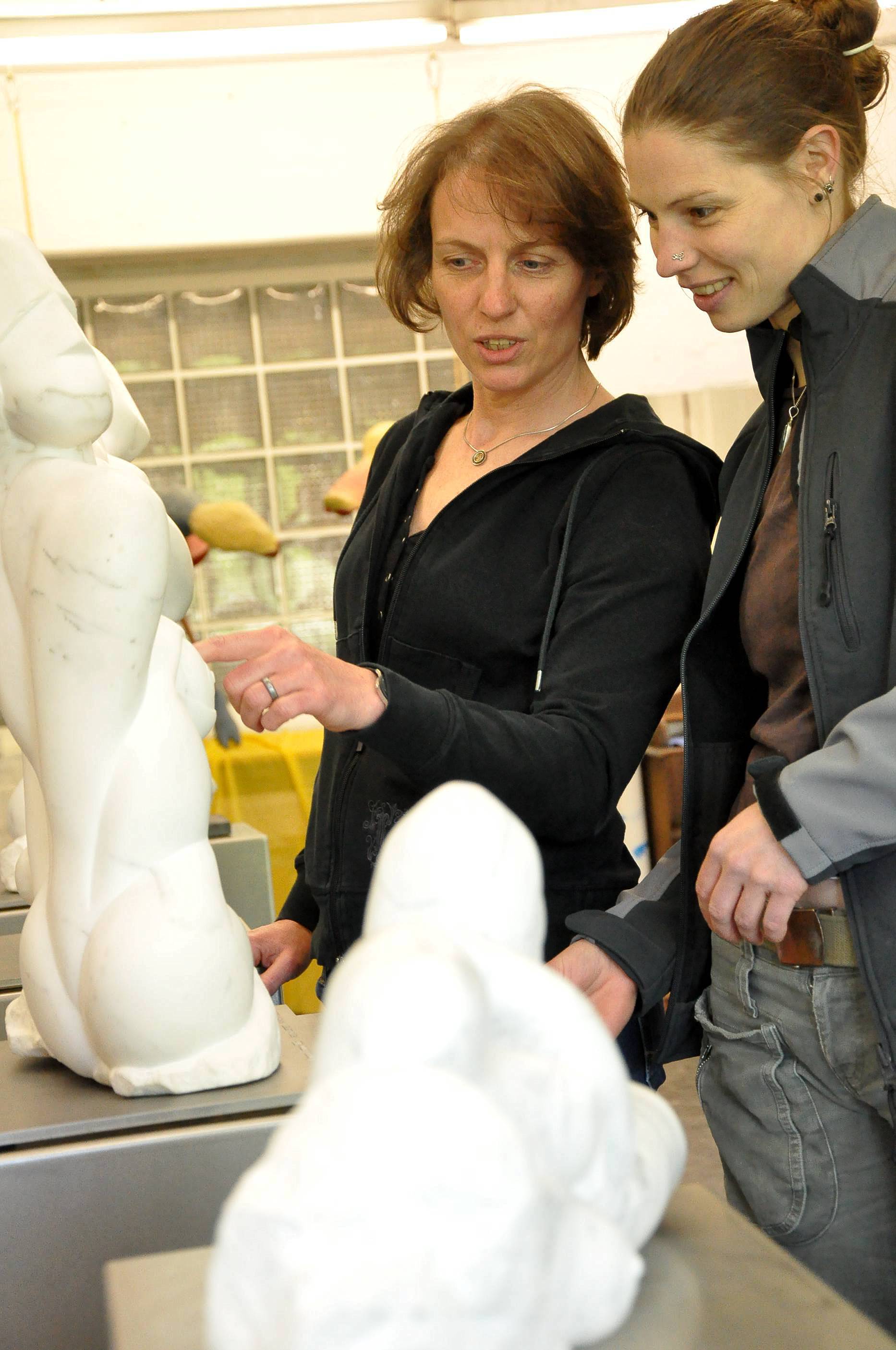Astrid Hülsmann
.
|
||||||||||||||||||||||||||||||||||||||||||||||||||||||||||
Exhibitions |
||||||||||||||||||||||||||||||||||||||||||||||||||||||||||
|
||||||||||||||||||||||||||||||||||||||||||||||||||||||||||
|
The artist lives and works in Kassel. |
||||||||||||||||||||||||||||||||||||||||||||||||||||||||||
R. Henze talks about the artist Astrid Hülsmann"Astrid Hülsmann, born in 1966, studied a Teaching Degree in Art at the University of Osnabrück and the College of Fine Arts in Braunschweig. In 1995, she became self-employed and established a wood workshop/studio (designing her own furniture), but then after 3 years she focused her art work on sculptures. She makes sculptures from stone, clay, plaster and papier mâché, which she has put on display at many exhibitions including Kassel, Bad Karlshafen and Eschwege. Since 1998 Astrid Hülsmann works as a lecturer for plastic design at different schools in the District of Kassel. At the Galerie 108 she put on display sculptures made from marble, chalky sandstone and clay, using the theme of one or two people. The look and posture of the individual statues are directed outwards towards the environment. In contrast to this, the pairs face each other – forming a small intimate cosmos. The formation of the sculptures from Astrid Hülsmann usually begins with coincidental indentations, edges or hollows in the untouched stone, in which she can make out the form of a body part. She then uses this to work on the stone, in the search of the whole body, its posture and position. If a second figure is hidden in the stone then the task is to form a relationship between the two. This process is not just governed by coincidence but is also subject to constant checks concerning for example, the rules of proportion, compositional factors, and the quality of the material and tools. An important factor is the esthetics of the material which, for example, play a special role for marble. Astrid Hülsmann believes that in addition to the extemely well polished surfaces that emphasize the texture, veins, inclusions and colours, also the structure of the raw stone should be allowed to "speak". |


